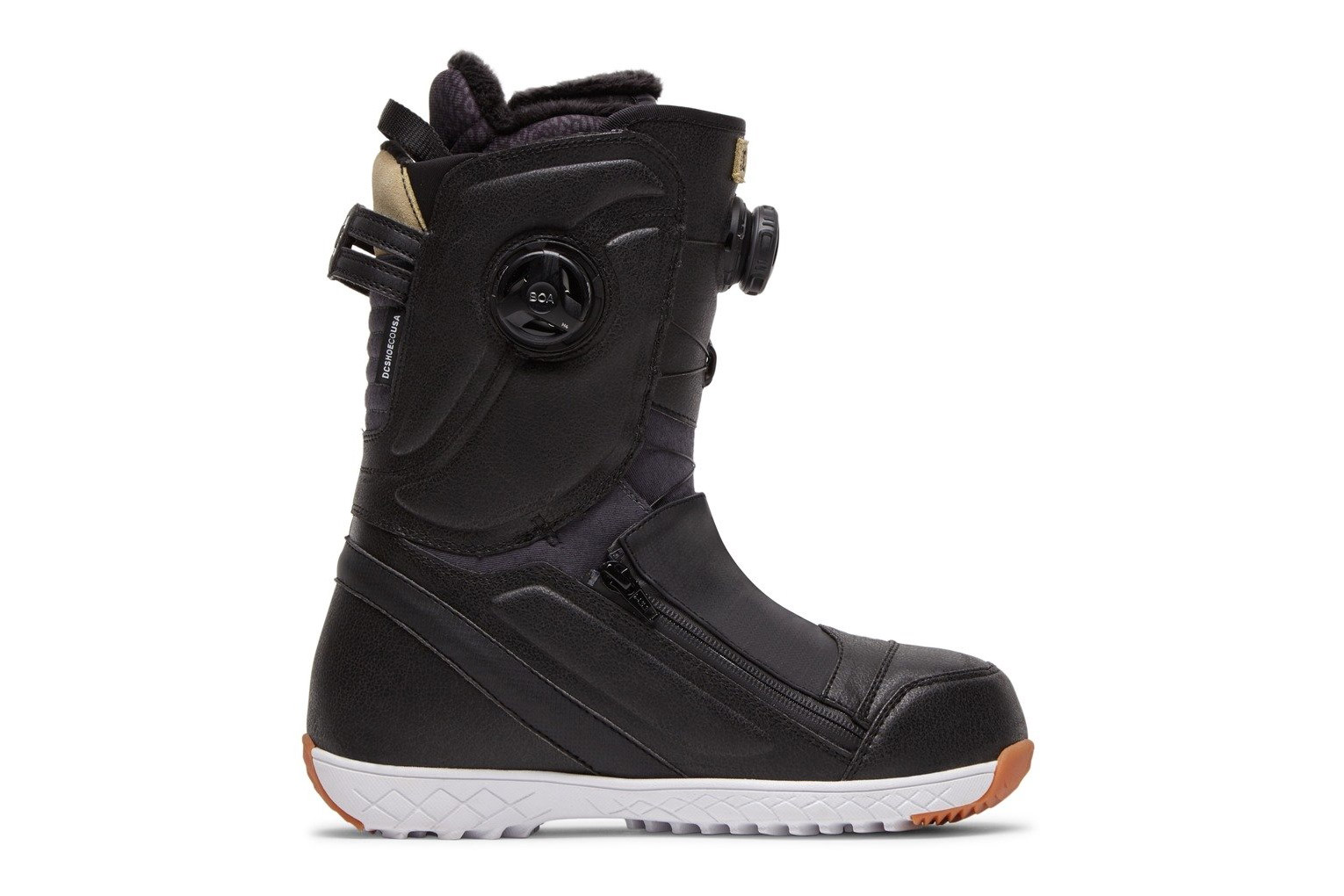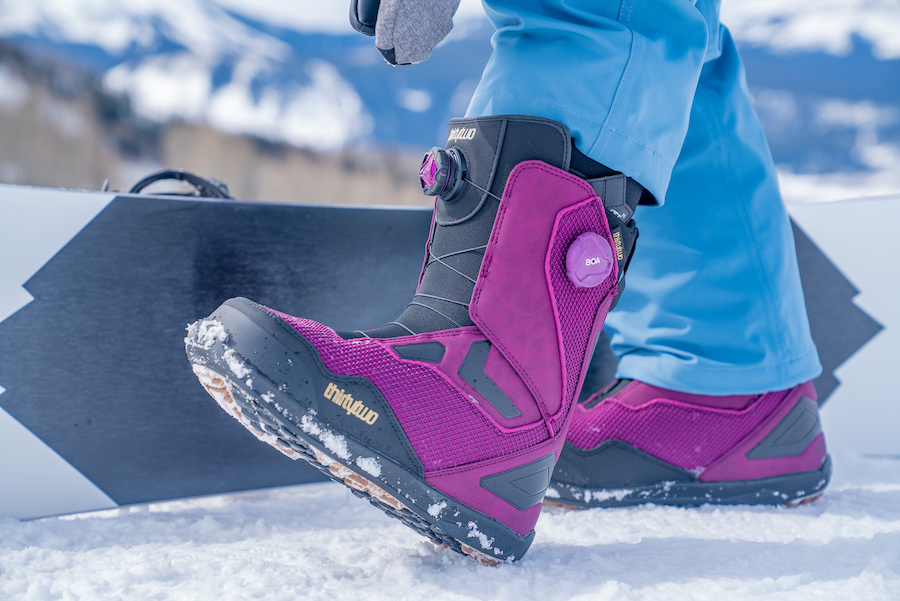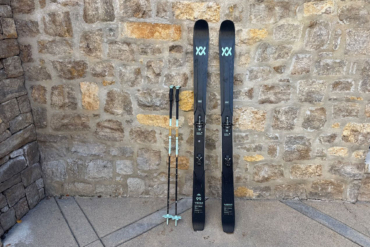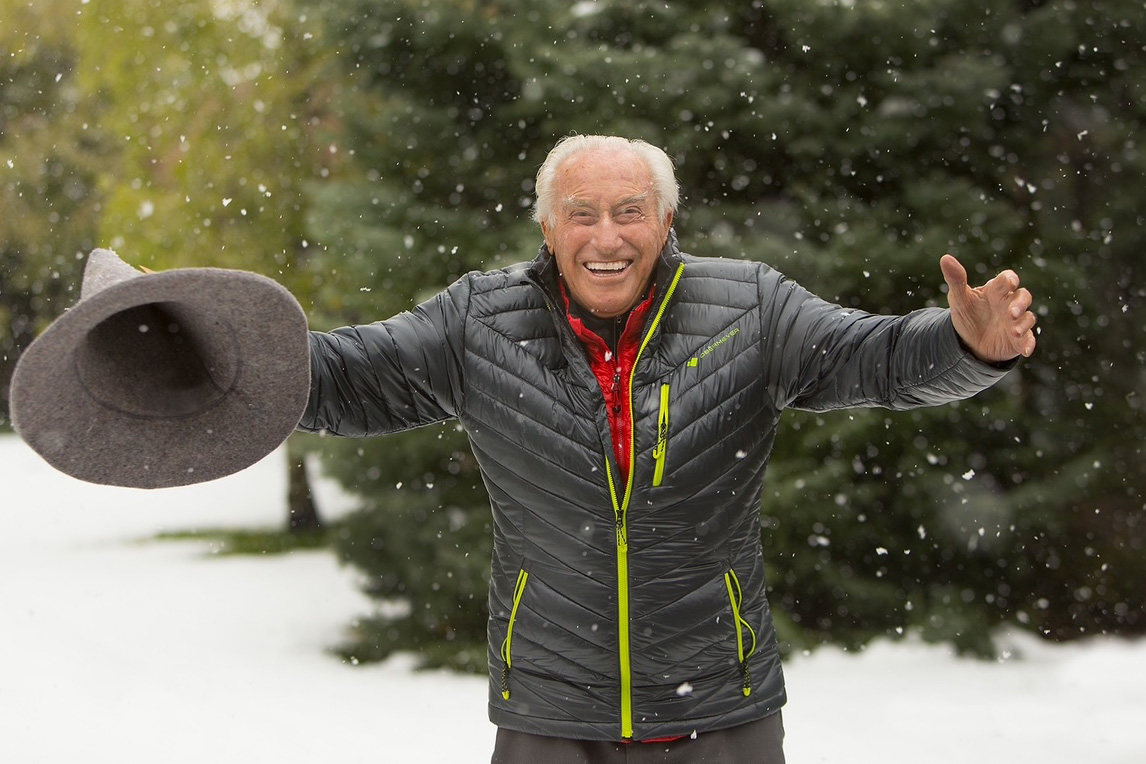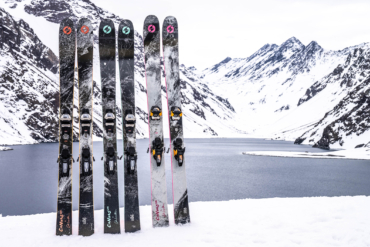No snowboard boot has ever kept my feet warm — it didn’t matter the brand, the socks I was wearing, or honestly if it was 30 degrees Fahrenheit and sunny.
So when I had the chance to test the DC Mora BOA snowboard boots, which tout a storm flap to keep snow out, insulation paired with a foil strobel, and thermo-regulating fleece, I was intrigued.
DC claims that the boots offer extra warmth and will always stay dry. I found this to be true, with the added bonus of an all-around, high-quality boot for female riders who need stiffness for a comfortable fit.
In short: The DC Mora BOA snowboard boots kept my feet warm, protected, and comfortable in all types of terrain. They are a great, stiffer boot option for intermediate to expert riders, especially those looking for an adjustable and reliable fit.
DC Mora BOA Women’s Snowboard Boot Review
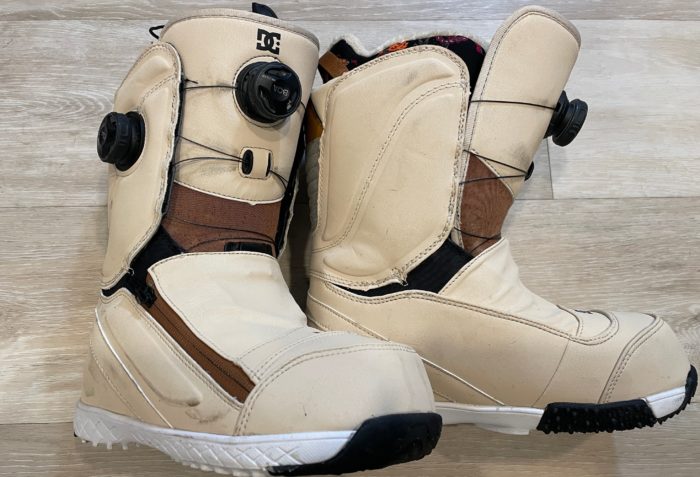
- Flex: Stiffer 7 out of 10 (on a 1-10 scale)
- Experience level: High intermediate to advanced
- Upper material: Synthetic
- Footbed: Impact-ALG made from algae
- Liner: Removable EVA memory foam liner, heat-moldable, 3M Thinsulate insulation
- Lacing system: Dual BOA Fit System with BOA SS laces
- Outsole: Dual-density rubber and EVA
- Price: $310
Testing the DC Moras
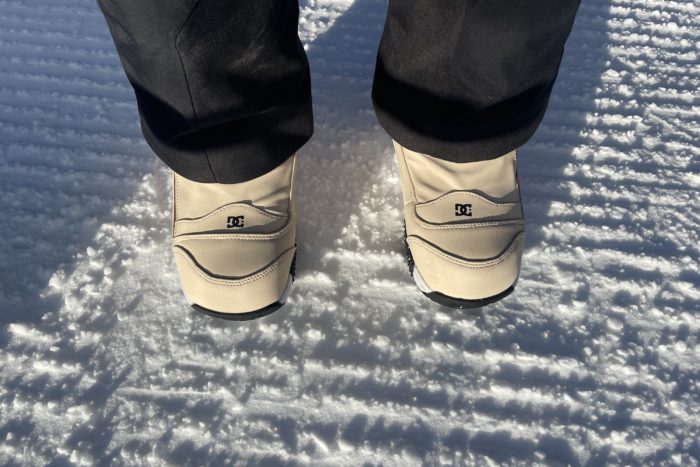
I tested these boots on various terrain at Colorado resorts, including Winter Park, Eldora, and Arapahoe Basin. I also wore them for groomers, tree runs, and deep-powder moguls, as I have been snowboarding for about 15 years. I’ve never had any intense fit challenges or foot injuries, but I’ve dealt with ill-fitting snowboard boots, heel slippage, and constantly cold feet. I have regular to narrow feet with a high arch. When testing, I focused on overall fit, stiffness level, comfort and warmth, and ease of use.
With the DC Moras, I even sported them during that hazardous cold spell that hit the Rocky Mountains before Christmas this season. For most of the days, temps averaged around the mid-20s F with cloud coverage. But I was able to really put the boots to the test one day while I was waiting for first chair, in temps around zero degrees F.
Increased Warmth, Decreased Moisture
These boots have a lot of high-quality materials and features. On this year’s boot, you get a new storm flap that sits on top of the foot, over the laces, and zippers easily on the side to secure it.
According to the boot’s description, the storm flap is designed to keep toes extra warm and dry. Collin Knott, a product manager with DC, also said that the storm flap’s sole purpose is to keep out snow in all conditions, especially while riding backcountry and building kickers.
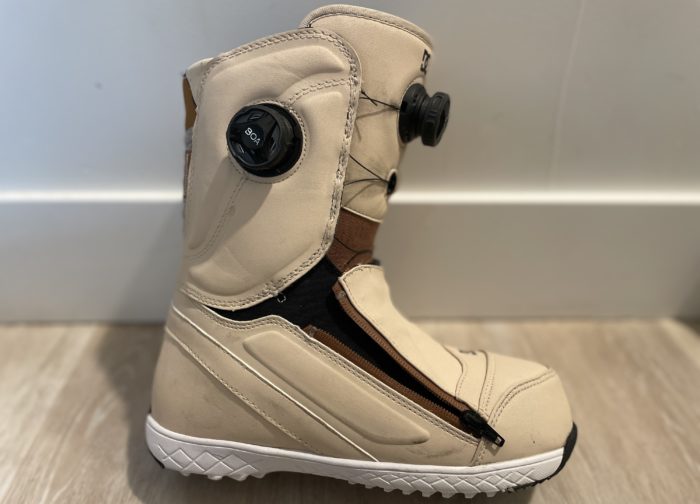
Although some storm flaps can be time-consuming or finicky, this one easily zipped up. And I never felt the need to really unzip it again. It kept my feet dry by keeping extra snow from piling up and getting stuck in the laces on deep-snow days. It didn’t necessarily keep my toes any warmer, though, so take its warmth properties with a grain of salt.
What did seem to help with my notoriously cold feet was DC’s tech in the removable liner and footbed. The Whiteliner, both by touch and when riding, felt thick, cushioned, and soft with added fleece from the ankle shaft to the top of the liner. It’s made from multilayer construction that uses EVA memory foam (hence the springy, cushioned feel) with a high-rebound and moldable EVA. The fleece is thermal-regulating, so you’ll stay warm when you need it and cooled off when you’re working hard.
The midsole also has a foil strobel, which DC uses in a variety of its winter boots. This, along with basic 3M Thinsulate insulation in the removable liner, helps retain heat within the boot, according to Knott. (Note: For socks, I wear Stance Premium Polyester Blend snow socks or its Performance Wool blend, both of which have wicking properties and a mid-cushion, over-the-calf design. And still, the insulation and liner in this boot definitely increased my foot warmth while snowboarding.)
Stiff and Secure
In addition to the quality midsole, footbed, and liner, other things in these boots that stood out were fit, versatility on terrain, and responsiveness. With three components — an ankle harness, power strap, and J-bars — you get full support from the heel to the ankle and all the way to the top of the calf.

Internal Ankle Harness
The webbed ankle harness attaches inside the boot’s shell at the back of the boot and around to the sides of the ankle. The webbing creates a harness that wraps around the liner near your upper ankle and lower calf.
I found the cinch mechanism easy to tighten, but only to a point. Once I had pushed it down far enough into my boot to tighten, while pulling the laces up, I couldn’t fit my hand in farther to keep tightening. In other boots I’ve worn, the cinching piece was able to connect to something that held it in place, so you could really pull up the laces and secure them tightly.
Power Strap
Around the top of the liner, you’ll find a strap that goes all the way around and secures at the front with a hook-and-loop closure. This was helpful to keep my foot in place from the top down, but I again had trouble fully tightening the strap as the front of the boot was in the way. Still, the boots’ stiffness and the liner design helped with stability on fast turns and whipping through narrow tree lines.
J-Bars
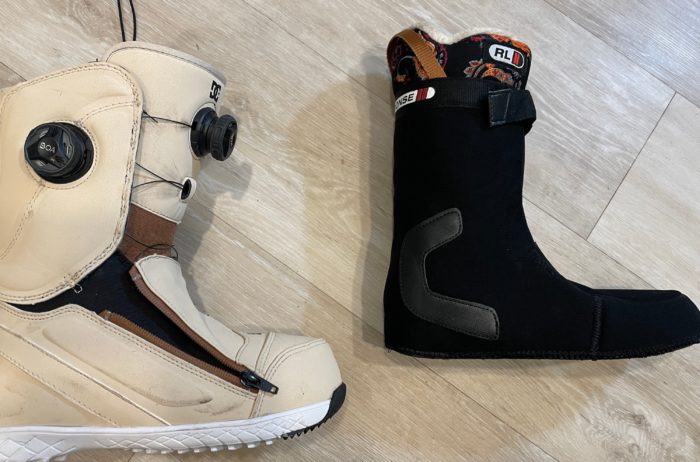
What are J-bars? J-bars are a type of foam insert, sometimes built internally into boots or available as inserts separately. Why do you need them? These inserts serve to eliminate extra space between a rider’s heel and the boot’s liner — reducing heel lift and improving toe-side edge response. Anyone who’s experienced heel slip or heel lift, especially people with smaller ankles, can benefit from J-bars. For the DC Moras, inside the liner there’s an articulated construction around the ankles to give a nice heel lock. These boots also have external J-bars. And they do the job; we experienced no heel slippage mid-carve.
Dual BOA Fit System
I’ve always been a fan of the BOA lacing system for supreme adjustability. On the DC Moras, you get two zones to dial in with the BOA cranks for precise customization.
Women’s DC Mora BOA Initial Feedback and Conclusion
The DC Moras are made for the more experienced female rider who can hit up a variety of inbounds terrain, and even spend some time in the backcountry. It’s a stiffer boot that yields more control during tough conditions, on steep terrain, or fast runs, and the added features like the internal ankle harness, power strap, and J-bars kept my foot in place no matter the turns. Our biggest feedback? We wish the harness cinches and power strap were easier to access and adjust. Though, once the boots are dialed in on your feet, they work great.
Finally, for beginner to intermediate boarders or those who don’t prefer a stiffer feel, this boot is not for you.
The boots also kept my feet warm and dry, which was an added bonus to complement the support and comfort of these boots. All of the features built into the Mora BOAs worked well — letting me ride without worrying about my feet and instead, only about which run to take next.

